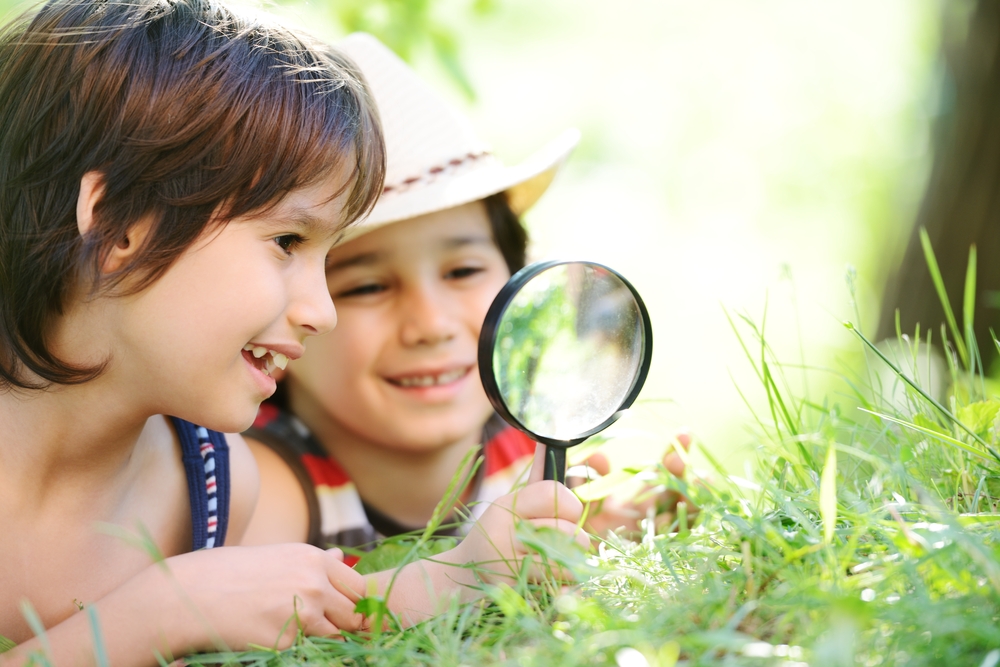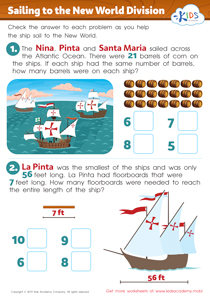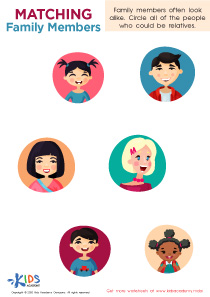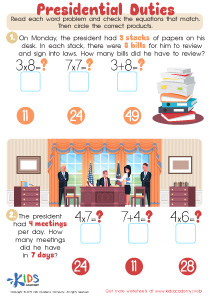Understanding communities Social Studies Worksheets for Ages 4-6
3 filtered results
-
From - To
Explore our "Understanding Communities" Social Studies worksheets designed specifically for children ages 4-6! This engaging collection helps young learners discover the fascinating world around them, focusing on the roles, functions, and differences within their communities. Through fun activities and vibrant illustrations, kids will develop crucial skills in social awareness, cooperation, and communication as they learn about families, neighborhoods, and various community helpers. Perfect for both classroom and home use, these worksheets are an excellent resource to foster curiosity and understanding of the world. Encourage your child's social development today with our comprehensive and interactive materials!
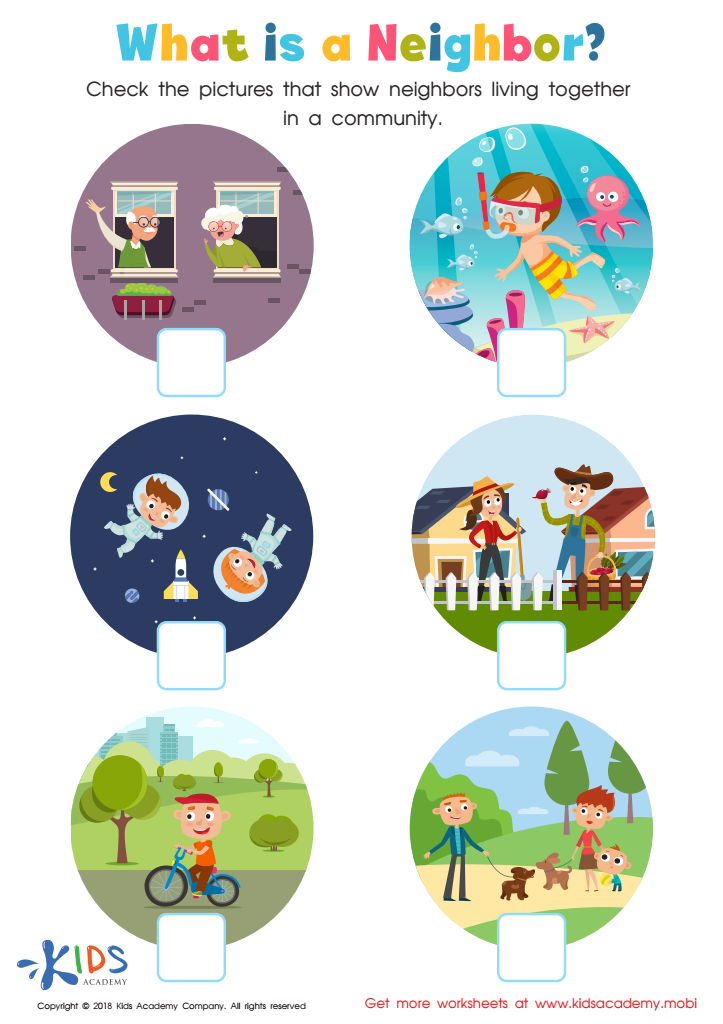

What is a neighbor Worksheet
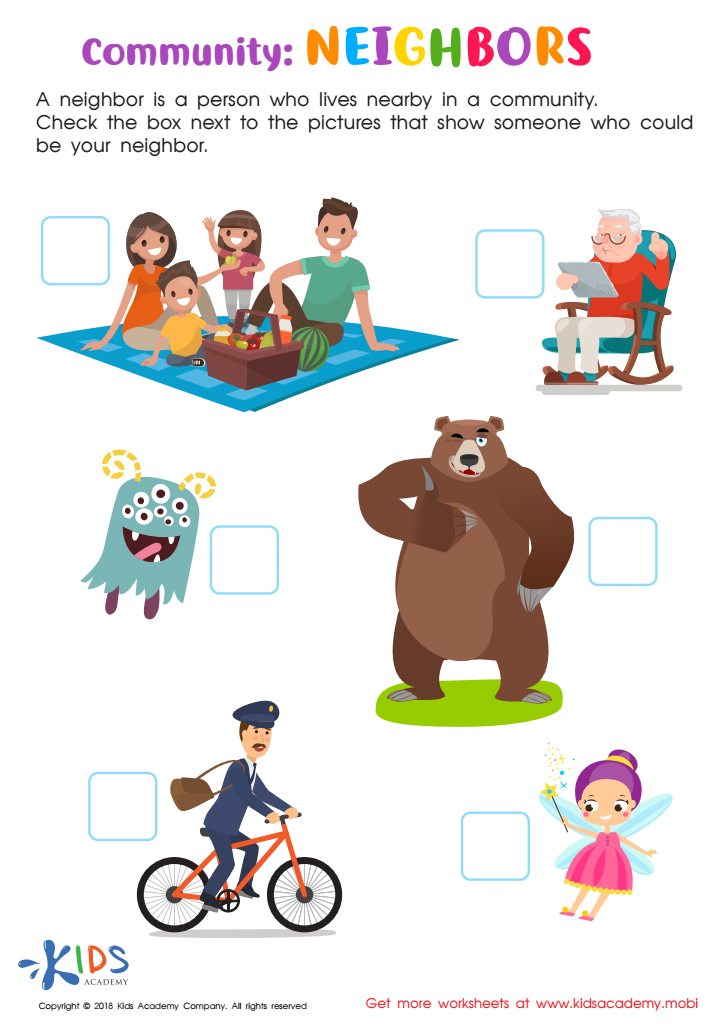

Community: Neighbors Worksheet
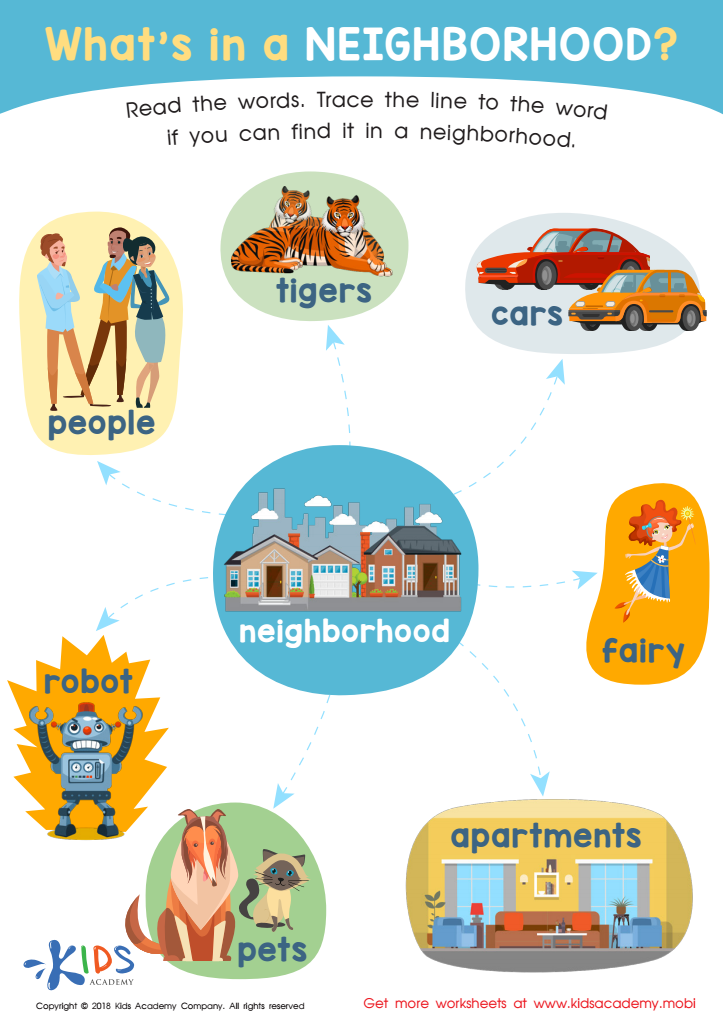

What's in a Neighborhood? Worksheet
Understanding communities in Social Studies is essential for children aged 4-6 as it lays the foundation for their social understanding and civic engagement. During these formative years, children are naturally curious about the world around them. Engaging them in discussions about their community helps cultivate a sense of belonging, promoting emotional and social development. It introduces young learners to diverse cultures, customs, and perspectives, fostering empathy and respect for differences.
Parents and teachers should care deeply about this aspect of early education because it encourages children to explore their roles within their family, school, and local community. By grasping the concept of community, children develop important skills such as teamwork, communication, and problem-solving. These experiences empower them to contribute positively to their environments.
Additionally, discussing community roles, such as those of teachers, doctors, and police officers, instills an appreciation for various professions and the value of working together for the common good. Ultimately, nurturing an understanding of communities not only enriches children's knowledge but also equips them with the tools they need to become responsible, engaged citizens in the future. This early learning experience is ultimately vital in shaping respectful, aware individuals who value their community and the society they inhabit.
 Assign to My Students
Assign to My Students








